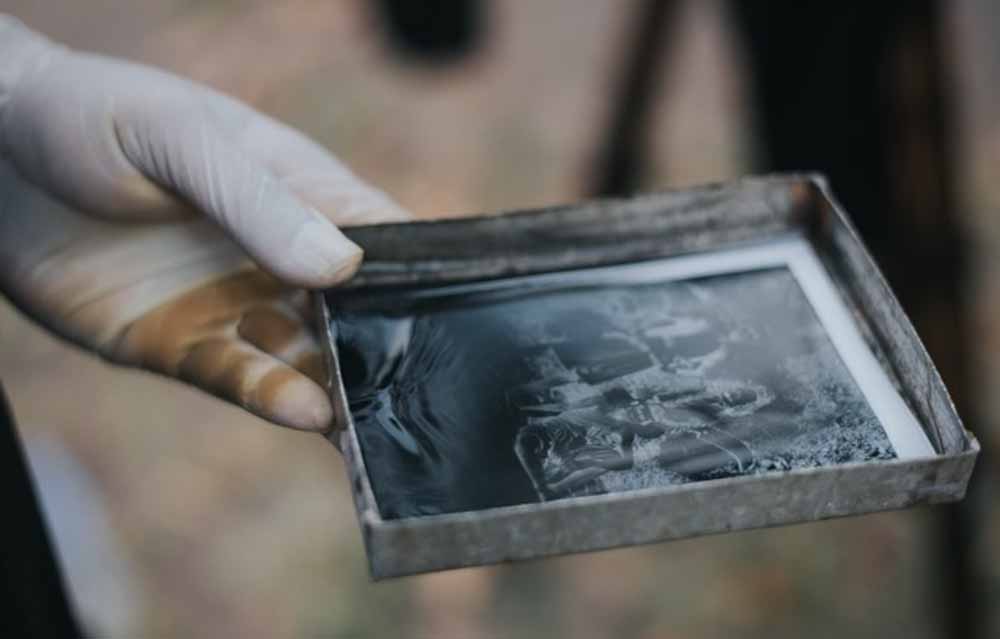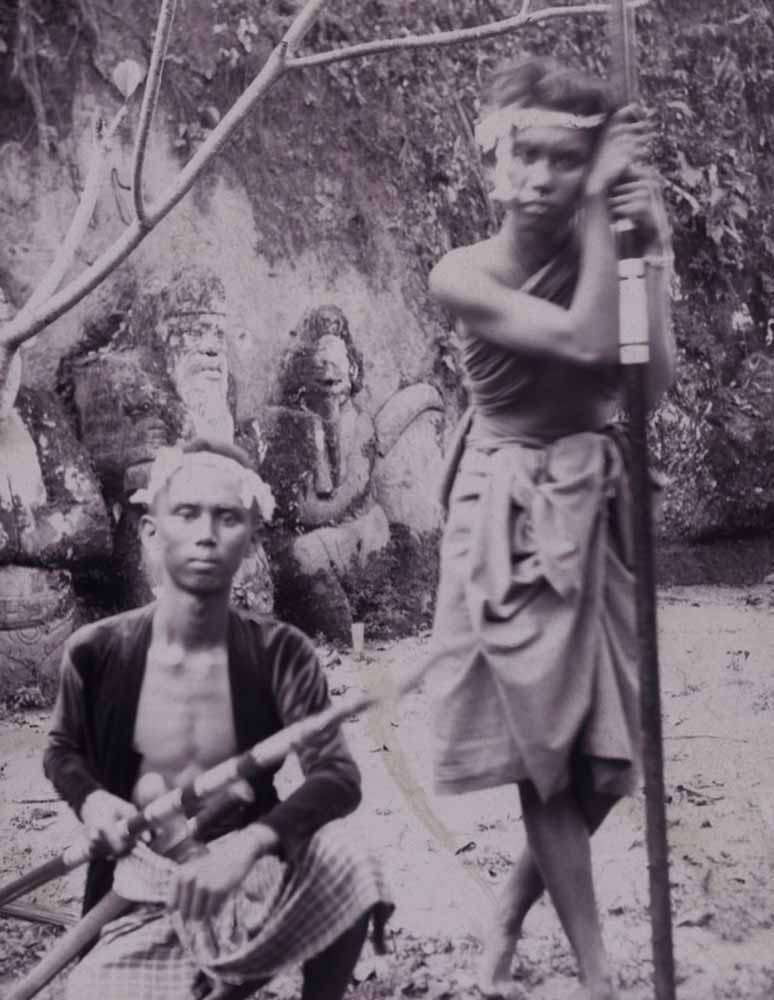The 21st-century digital revolution propels us into a vast and exciting future. Empowering individuals and communities with an array of creative opportunities, the onslaught of the new, however, consequentially disrupts the old. As the rapidly-evolving digital sphere increasingly casts its spell upon us, once state-of-the-art technologies are being swept aside and forgotten, along with essential moral values.

Balinese photographer I Gusti Agung Wijaya Utama S. Sn has a unique vision to raise awareness of the past through distinct, eye-catching fine art and reconstruction portrait photographs. Gung Ama, as he is known, does not use digital technology, but a process from the past; the Afghan Box Camera. As the name suggests, the camera is linked with Afghanistan, being first used in villages by travelling photographers before there were any photography studios.
The Afghan Box Camera is a self-contained darkroom and camera within a simple wooden box on a folding tripod. Black-and-white photographs are created in minutes, making a paper negative and then photographing the negative to create a positive image. Unfortunately, this old-world technology is disappearing, being replaced by digital cameras, modern photography studios, and smartphone selfies.
“Digital technology and the modern mindset desiring immediate outcomes and satisfaction are impacting upon the art of photography and contributing to the erosion of traditional Balinese values,” said Gung Ama, born in Batubulan Gianyar in 1988, whose interest is photography began in 2006. “Nowadays, smartphones equipped with sophisticated cameras are affordable and an essential modern icon and tool. Moreover, social media and selfies dramatically impact lifestyles and alter our concept of identity. By recreating the nostalgia and curiosity of old Bali through manual, handmade photos, my objective is to reignite cultural memory while inspiring awareness and discussion among all the generations.”

The resurgence in the cultural value, creative distinctions and the beauty of traditional Balinese textiles are some of the main focuses of Gung Ama’s photography. The aesthetic and cultural attributes inspire nostalgia of pre-colonial Bali when traditions remained steadfast. In addition, the images strike a chord of longing for an era before globalisation and modernity initiated the transition from the sacred Balinese agrarian economy to one overly dependent on tourism.
“My fascination of old photographic techniques prompted me to learn and experiment in taking these pictures. So, early in 2021, I built my first Afghan Box Camera,” Gung Ama told me. “In 2016, I initiated ‘Gamaphoto1930’, with the theme of Rekonstruksi Project Bali 1930 using black and white photographs representing the perspective of the pre-colonial Balinese.”



The Afghan Box technique applies to interior and outdoor settings. Gung Ama places careful attention on creating the perfect environments. Old temples and historic locations, along with an array of natural settings, provide the necessary backdrops. At his home studio in Batubulan, he arranges props with cultural icons and dresses his subjects to suit. For example, young newlyweds are often photographed in stunning traditional attire capturing distinct memories to help celebrate their sacred marital vows.
After arranging the scenario and fine-tuning the costume details, the image creation process begins. The camera has a shutter operated by a trigger attached to the lens with a long cable. Gung Ama quickly opens the lens cap exposing the photographic paper inside the box, and immediately replaces the lid. He then inserts his arm through a light-tight sleeve accessing the inner darkroom. He develops a paper negative of the image he has just taken in a small tray of chemicals. Next, he shoots this negative to make the positive image and finally develops this image to produce the finished photo. The outcome is consistent with old images of Bali. The pictures are often slightly out of focus and appear faded by time, weathered by years of tropical humidity.
A photography graduate from the Indonesian Art Institute (ISI), Denpasar Gung Ama’s curiosity with Afghan cameras began in 2019. In 2021 Gung Ama hosted workshops in Bali while exhibiting during Bandung Photography Month held by the Alternative Photography Process Indonesia Collective. His solo exhibition ‘Swa’Raga’ in October in Denpasar showcased an array of images printed on paper and natural materials. His fine art instincts evolved experimenting with chemicals and coffee during the development process, innovating novel outcomes.
Gung Ama’s profile has snowballed, recently being invited to collaborate in two highly publicised book projects. He was a creative team member in a project that held a photo exhibition, fashion parade and launched the book Rekonstruksi Foto Karya ‘TJOKORDA GDE RAKE SOEKAWATI “How The Balinese Dress 1926” in early January at the Ubud Royal Palace. In addition, Gung Ama introduced the Afghan Box Camera as an alternative photography process to the Indonesian Minister of Tourism and Creative Economy, Sandiaga Uno and Bali’s Vice Governor, Prof Dr Ir Tjok Oka Artha Ardhana, better known as ‘Cok Ace’.

“My photography reflects the growing sentiment within the Balinese seeking a return to the wisdom of the past,” Gung Ama said. “In the face of modernity and the homogenisation of cultures, I believe it is important to celebrate and embrace cultural icons to help reinforce our identity. In addition, it’s essential to be reminded of our forefather’s messages, culture lost and the wisdom of the past.”
‘Bunga Palsu’ (Fake Flower) is a compelling example of how Gung Ama is pushing his technical prowess towards the new creative territory. The picture describes a young man in a traditional headdress holding a plastic flower arrangement, partially obscuring his face. Artificial light sparkles upon the flower and highlights his left shoulder, while a dark shadow defines the right. Juxtaposing dark and light with the old and new, Gung Ama creates a fascinating aesthetic collision with strong visual tension. The subject’s eyes are hidden, concealing his identity while his mouth is expressionless, adding to the intrigue. Highly suggestive, the image has a remarkable power to trigger multiple interpretations within our imagination.
Follow Gung Ama on Instagram : @gungama_gama






